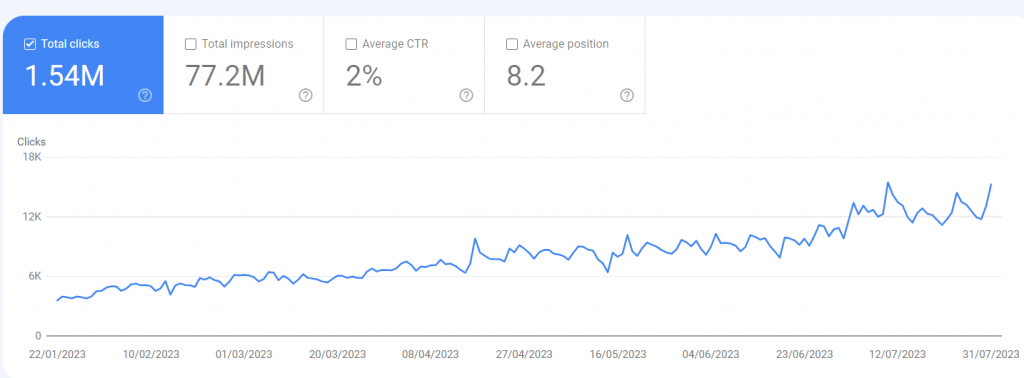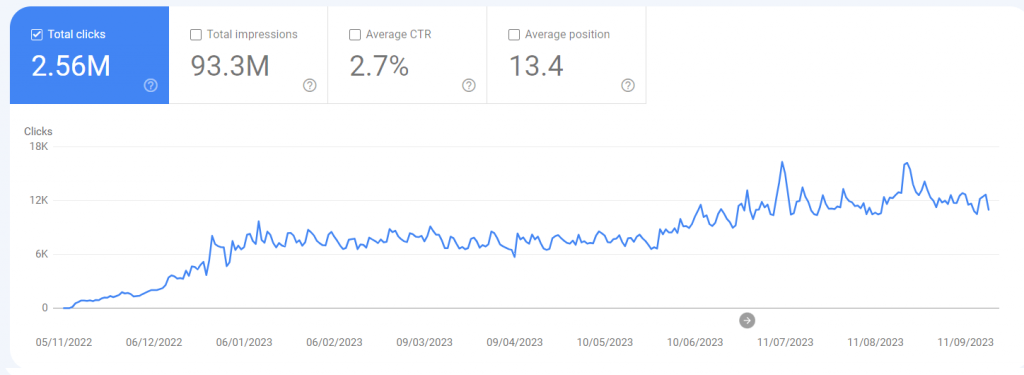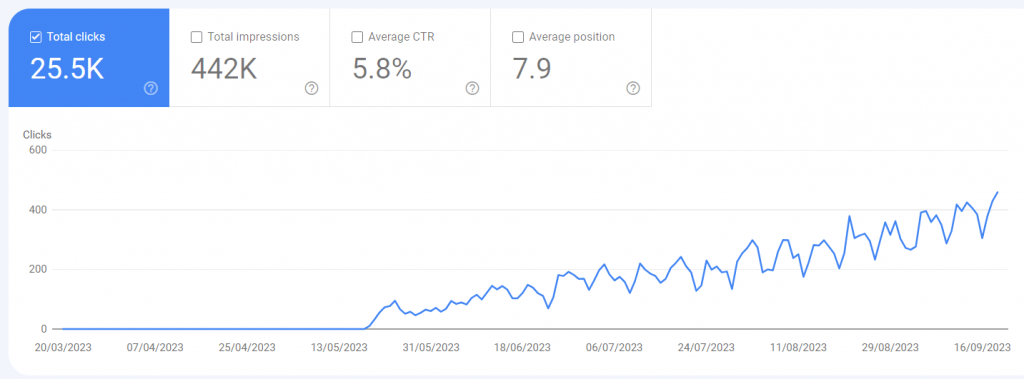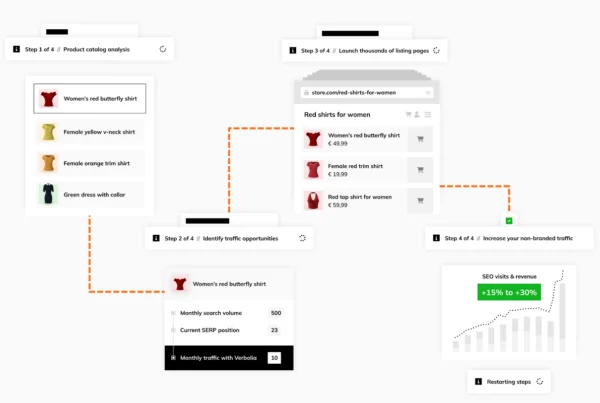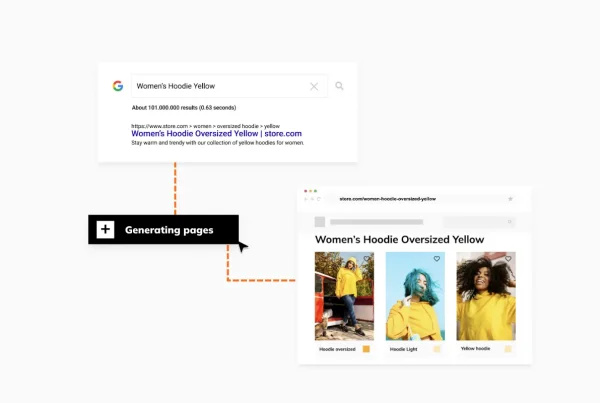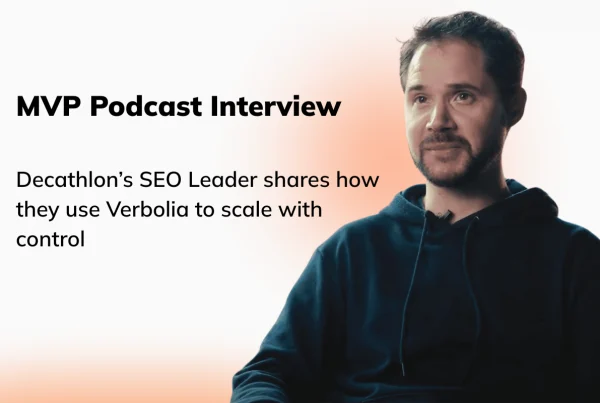Why should you create more Product Listing Pages?
Estimated reading time: 11 minutes
If you are an e-commerce manager, chances are high you already have traffic coming in through SEO. You might even know which search terms are driving this traffic and which are the best performing pages for SEO. But do you really understand why you are ranking for some search terms and not for others?
In this report, we’ll only talk about non-branded SEO traffic. These are the searches where users are looking for what you are selling without having specified who they want to buy it from. This traffic is what’s being fought for by you and your competitors and we’ll look at how some of the major e-commerce retailers in Europe are driving non-branded SEO traffic to their store today. By looking at what these big guys are doing, we can learn what you can do to get some of that traffic to your store.
A bit of theory on how e-commerce website architecture is needed to understand the big picture here.
Besides the homepage, an online store mainly has 2 types of pages that answer searches with a transactional intent. There are category or product listing pages (PLP’s) and product detail pages (PDP’s). Generally speaking, if an e-commerce store has 100 products it has about 5 categories. So for about every 20 products you usually have around 1 category. For example, for an e-commerce with 6.000 products, you’d expect it to have around 300 PLP’s or categories.
PDP’s are pages that describe one single product and all aspects of that product are described in detail.
For search engines, this type of page answers a very specific search intent. Google or other search engines present this type of pages to their users if they assume it’s the best possible answer from all the pages of your website to satisfy the user request, meaning if the search word is very specific.
PLP’s on the other hand are collections of products. Google presents this type of pages if the search intent is less specific. The user isn’t looking for 1 product in particular.
Whenever the search intent isn’t detailed enough to have 1 single product as the best possible answer, a PLP will have a better chance to satisfy the user as it allows further refinement within the given result set.
Don’t forget that search engines are bots
Another interesting way to realise how search engines know what a page is about is by looking at how they interpret a page. In essence, search engines are robots. These bots will read the html of a page and execute JavaScript to then figure what the page is about. We like to use alyze to get a view on how a robot like Google sees your page. This tool shows you which are the most occuring expressions found in a page and gives a weight depending on where these pieces of text occur. If a page has “red socks with black polka dots” in the page title and the H1, then chances are high Google classifies this page as a page to answer a search for “red socks with black polka dots”.
Example of the most occurring expressions on a PDP ranking for “red socks with black polka dots”. The most occurring expression is very specific.
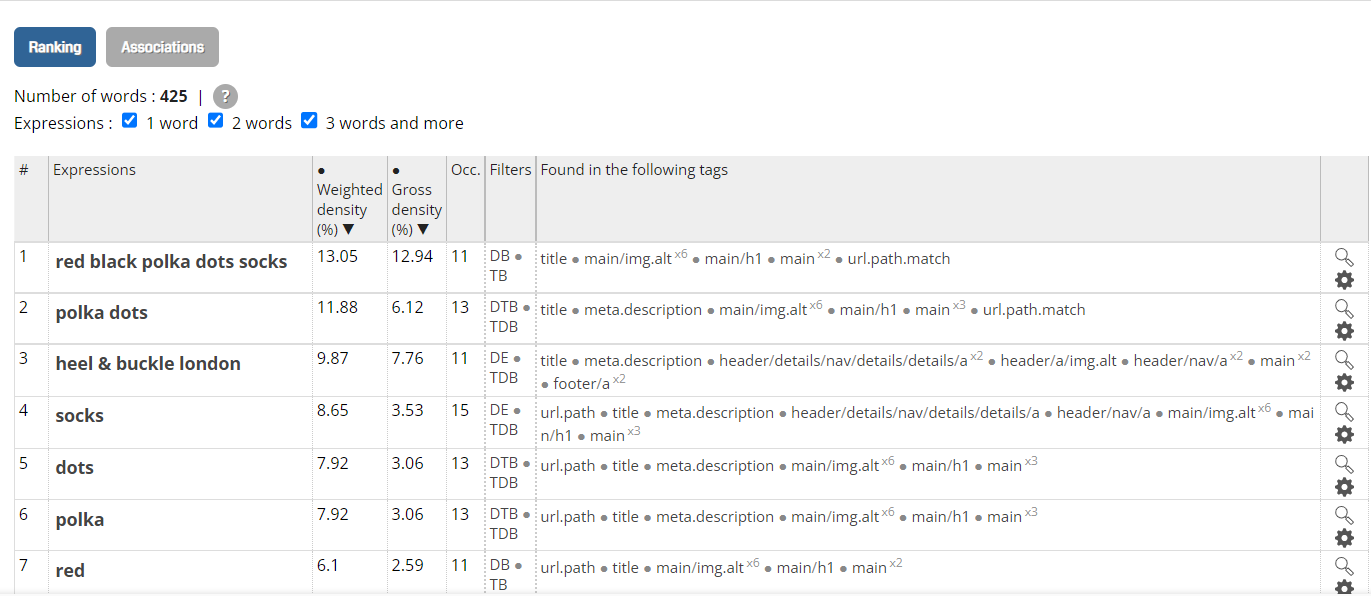
Example of the most occurring expressions on a PLP ranking for “red socks with black polka dots”. The most occurring expressions are not specific.
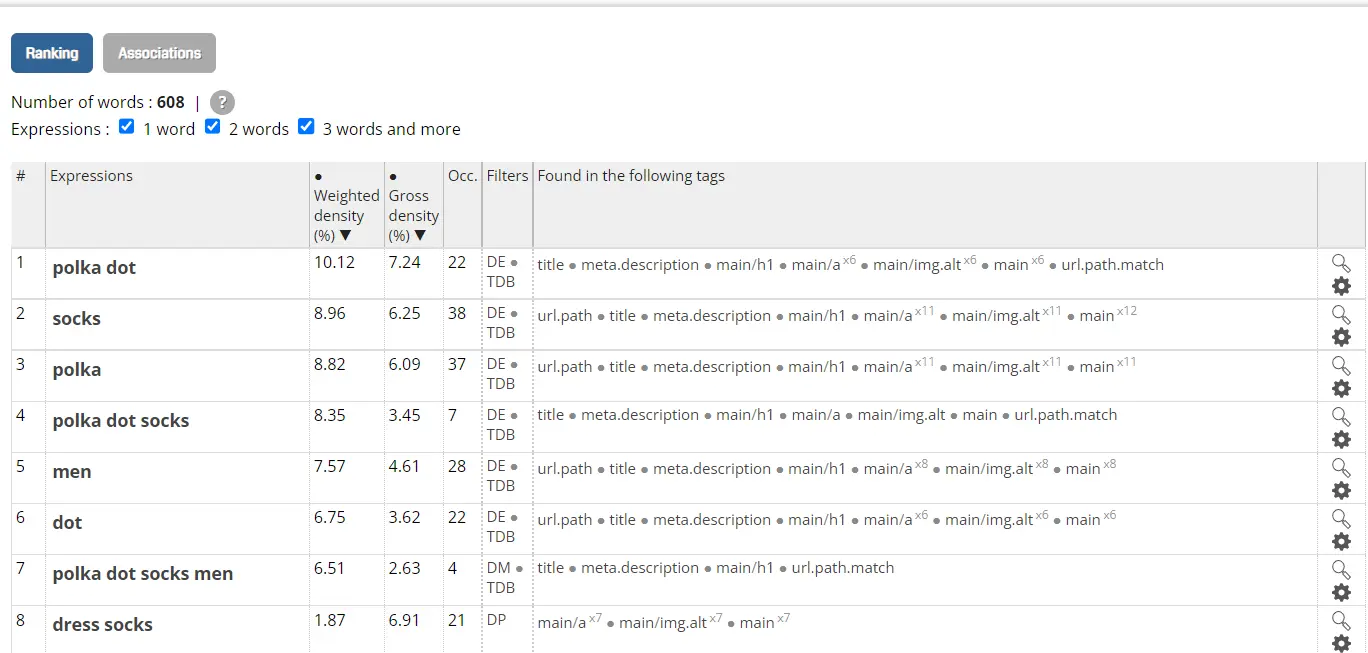
Which data should you look at?
Ok so we understand that an e-commerce has mostly 2 types of pages and that bots see PDP’s having long and specific expressions, while PLP’s mostly have broader expressions. We want to know which type of page is most often served by Google for transactional non-branded searches.
In our research, we looked at various Top 100 retailers in Europe. For this purpose, Google Search Console (GSC) gives the most accurate answer to this as it’s the most reliable source to report on clicks for search terms and pages. GSC tells you how Google users found your website by showing you the search terms that resulted in SERP impressions for your site and clicks to your website. You can also see which page was served by Google per impression and per click.
The downside of the GSC web portal is the search results report limitations of 1000 results. This means you can only export up to 1000 queries and pages. But by using the GSC API, you are able to retrieve all this data for every impression that occurred in the past 16 months. If you can’t code, you can use the Chrome extension Search Analytics for Sheets that can help you to get the data as well through that same API. We like to use it as it’s free (for up to 25.000 rows) and it allows you to easily get your hands on this data.
By requesting data grouped by query and pages and excluding the brand name from queries using filters, you get a view of all the pages that generated at least 1 impression. In our analysis, we then grouped the pages into 2 page types: PLP’s and PDP’s. This can be done by identifying URL patterns per page. If a PDP always contains “.html” for a given website for example, you can label it PLP and if not label it PLP. This can easily be achieved in Google sheets by working with a FIND formula like the example below
=IF(ISERROR(FIND(“.html“,B2))=FALSE,“ProductDetail“,“CategoryPage“)
Of course, you need to make sure there are no other page types that also contain “.html” (like blog pages for example). Once the labelling is done you have everything you need to build your view on non-branded SEO traffic per page type.
What do we see amongst large European retailers?
We’ve analysed around 30 retailers from 8 different European countries and 8 different industries. Despite the fact that most of the pages of an e-commerce site are PDP pages (remember the 5% PLP vs 95% PDP general rule), what we see is that the small group of PLP pages represent 70% of the clicks made by search engine users.
Wait a minute, does this mean that almost all of the non-branded SEO traffic is driven by PLP’s? Yes, you are reading this correctly! We have looked at several large European retailers and these results are consistently coming back. It does make sense if you think about how search engine users are expressing the way they search for products. Do you often express very specifically what you are searching for when looking for something to buy?
We analysed if this is the case across all industries and yes it is for most of them. The only 2 industries where we noticed that majority of the non-branded organic traffic is not coming from product listing pages are the Pharmacy and Cosmetics industry. This is probably because for these types of products, people search for specific products.
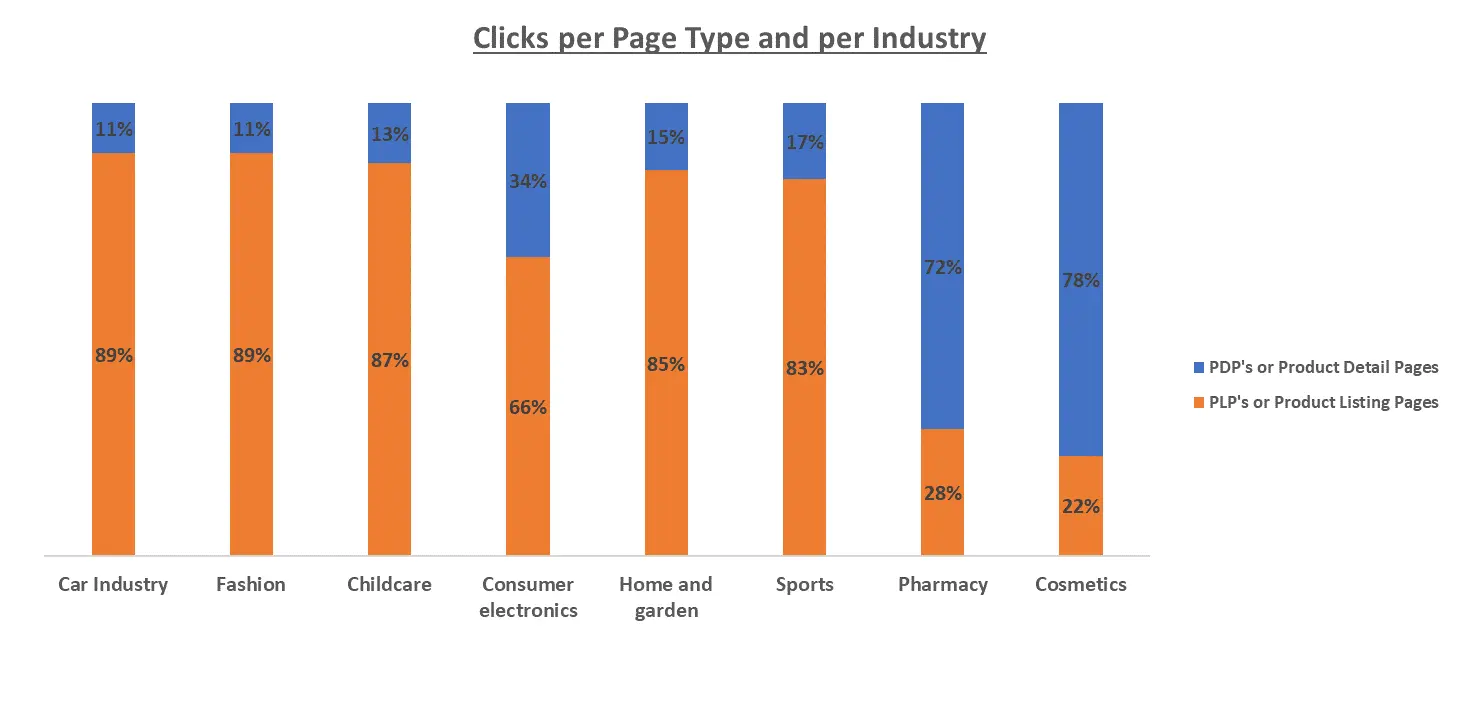
Product listing pages bring in the bulk of the non-branded SEO traffic. Is this because PDP’s are more suited for queries with very few impressions? You would assume that the more specific the search intent, the less impressions it has. You would think that queries with a low number of impressions are dominated by PDP’s. That is true but only to a certain extent.
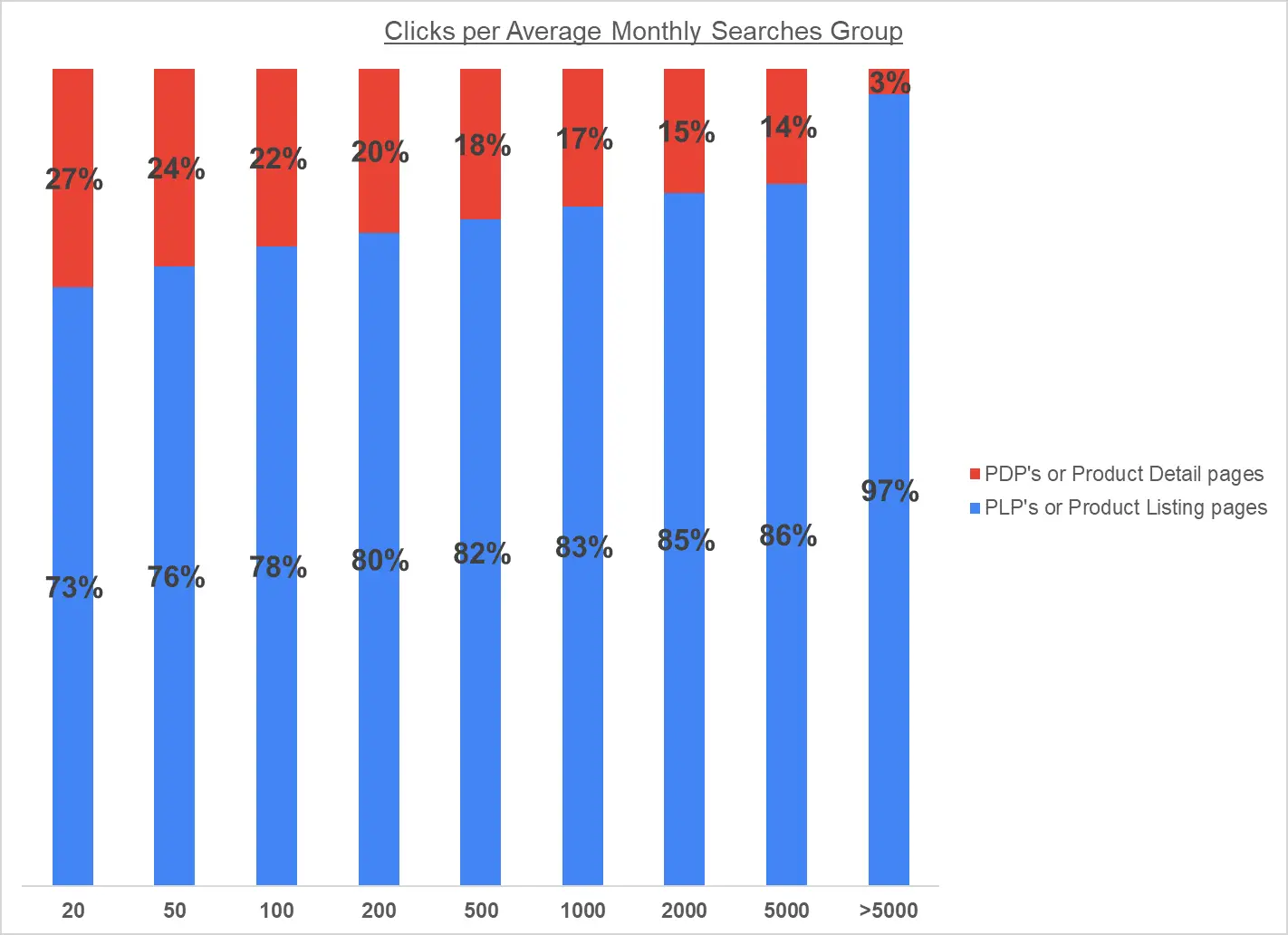
When zooming in on some ecommerce players more specifically we see in the data that the share of clicks captured by PDP’s is highest for search terms with a low average monthly searches volume but still, almost 3 clicks out of 4 are sent to PLP’s for these stores.
What we also see is that Google likes to try out different pages from your website, especially if the query has a high amount of search volume. The more impressions a query has, the more freedom Google has to test which is the optimal page from your store to satisfy the user. This looks a lot like Google’s machine learning testing various pages from your site and evaluating which pages are satisfying the user query. For queries with a very high number of impressions, we see that Google tested more than 30 different pages for the retailers we analysed.
The graph below shows the average number of pages that Google uses per query. You can see for example that for queries with more than 5000 impressions, Google tries 9.14 different pages per query to see which page resonates best.
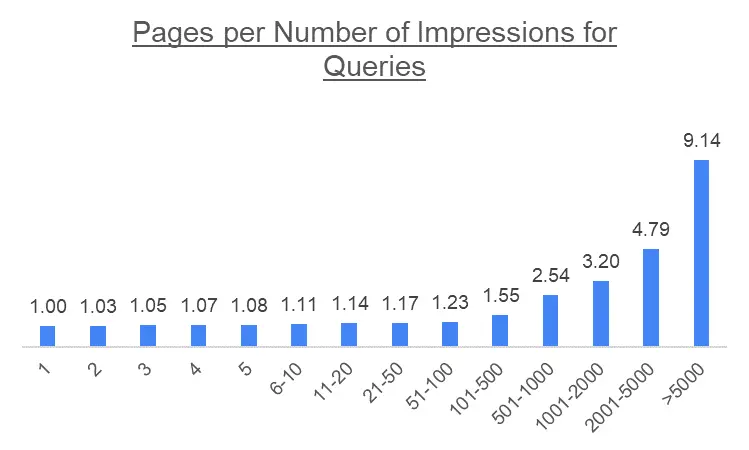
How to create more PLP’s
Ok so Google prefers PLP’s over PDP’s to answer searches for transactional non-branded queries. But which PLP’s should you create? One way to find this out is by looking at the distinct number of queries per page. When you sort your dataset by number of queries per page from high to low and, you will be surprised by the breadth of search terms for which Google decided that your page might be a great answer for a search. In fact, we see that some pages were being chosen by Google for more than 2000 different search terms. In the example of a French retailer below, you can see that 1 PLP page is ranking for many different search terms that each deserve their own PLP page.
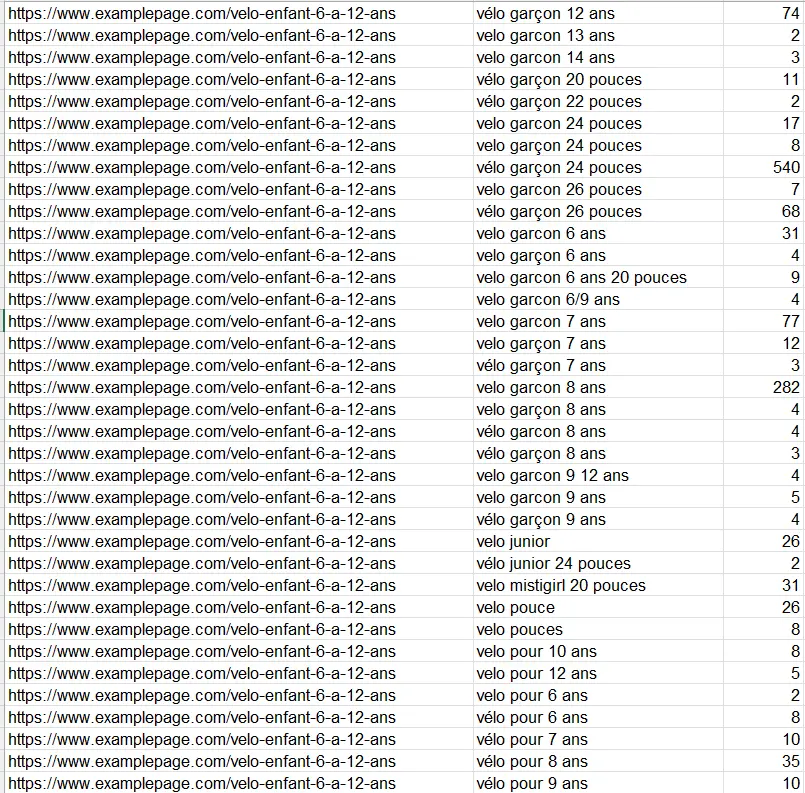
If you dig into these search terms, you realise that by creating more specific PLP’s, you would have a much better chance to rank higher because you would have a page that answers the search term in a more precise way than the page Google chose. By running over these searches, you can actually easily identify clusters of searches for which a new PLP would be the perfect answer to a user query. On average, for every page our research found that 10 different queries were answered. This tells us that in most cases the PLP’s aren’t specific enough to answer the user query.
How much PLP’s or categories should I create?
When deciding how many product categories (PLPs) to create for your online store, keep two key ideas in mind: “Collective Exhaustiveness” and “Unique User Intent.”
1. Collective Exhaustiveness: this principle, originating from the fields of statistics and data analysis, ensures that all possible categories or product groupings are covered. In the context of eCommerce SEO, this means creating category pages for every conceivable group of products within your product catalog. These categories can range from broad classifications like “women’s jeans” to more specific ones like “high waisted skinny jeans for women.” The aim is to identify and categorize every distinct group of products, ensuring that each set has unique features differentiating it from others. This exhaustive categorization is essential for search engines. Each category should accurately describe a set of products, capturing the unique features that set them apart from other groups. This clarity helps search engines understand exactly which search intent the category page is targeting.
2. Unique User Intent: this principle is about understanding and catering to the specific intentions behind user searches. In your category structure, it’s perfectly acceptable to have overlapping products per category, like “women’s jeans” and “high waisted skinny jeans for women,” as long as each category addresses a distinct user intent. However, avoid creating categories that are too similar, such as “high waisted jeans” and “high rise jeans.” In these cases, Google’s advanced language understanding capabilities can interpret these as targeting the same user intent, treating them as duplicate content.
To avoid this, evaluate the overlap in products between categories. A high degree of overlap usually indicates similar user intent. Additionally, check Google’s search results for each category. If there’s a significant overlap in the top results for different category searches, it suggests that Google views these queries as synonymous, which can harm your SEO efforts.
Start creating more PLP’s now?
Don’t wait any longer and deepdive in your GSC data. Get all the clicks and impression data grouped by queries and pages and find out which pages Google has chosen to answer which queries. You will very easily identify the new PLP pages that you should create in order to allow Google to have a better page from your store to answer queries. You can even see how many impressions these queries have and make an estimated guess on how many extra clicks you would capture if you could win a couple of positions in the search engine rankings by creating more specific PLP’s.
Does it work?
Yes for sure. At Verbolia we have built the technology to identify queries and create PLP pages at scale and very importantly, by making sure no pages are created that target the same search intent. Because of the process described above where Google tests different pages from your website in order to find the best possible page for a search, Google gradually promotes the new PLP’s in the rankings. This process takes time. What we see is that it takes more than 12 months before these new PLP’s have reached their full potential of gaining extra SEO traffic.
Examples of daily SEO visits on product listing pages created by Verbolia
Retail industry in Latin America – high brand authority (1M monthly brand searches). Still growing 7 months after launch.
Fashion industry in United States – medium brand authority (70K monthly brand searches). Slow growth at start but still climbing 16 months after launch.
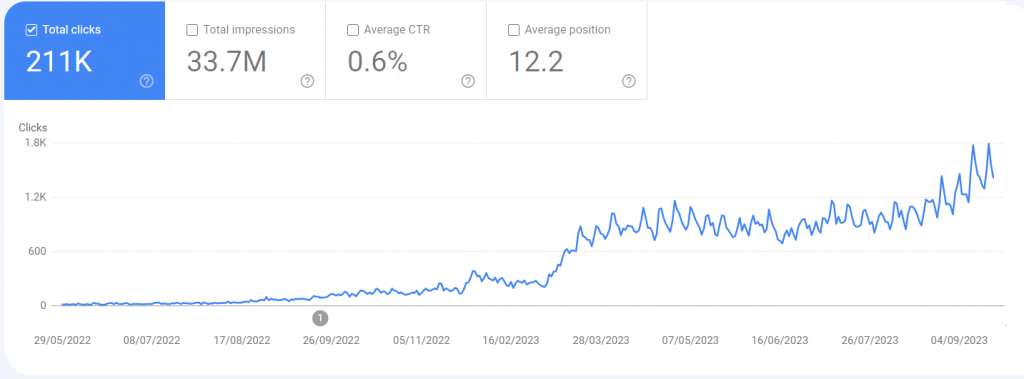
Pharmacy industry in Europe – medium to low brand authority (5K monthly brand searches). Still growing 4 months after launch.
Jobs industry in Europe – high brand authority (400K monthly brand searches). Still growing 6 months after launch.
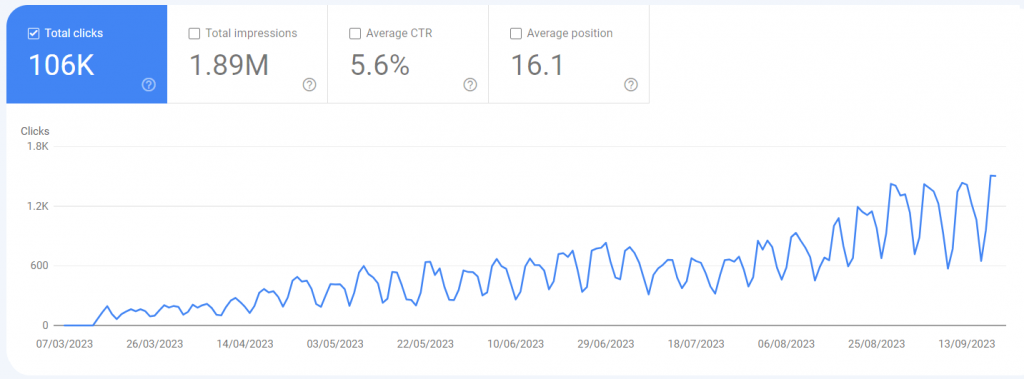
About The Author
How can Verbolia help your e-commerce platform.
